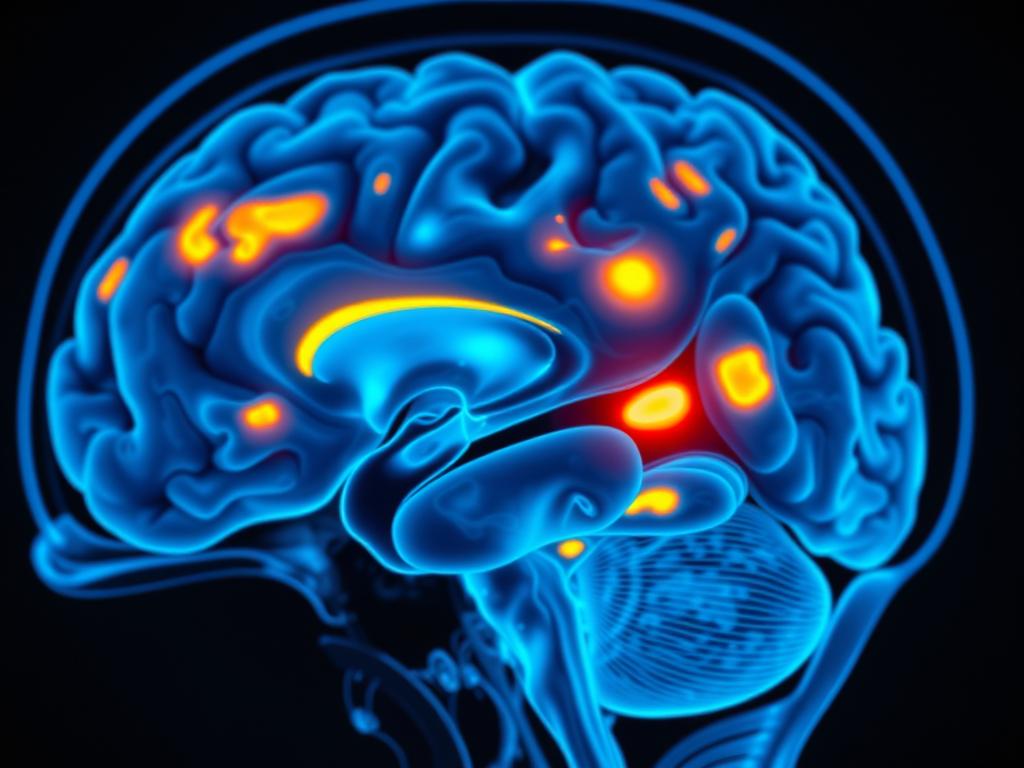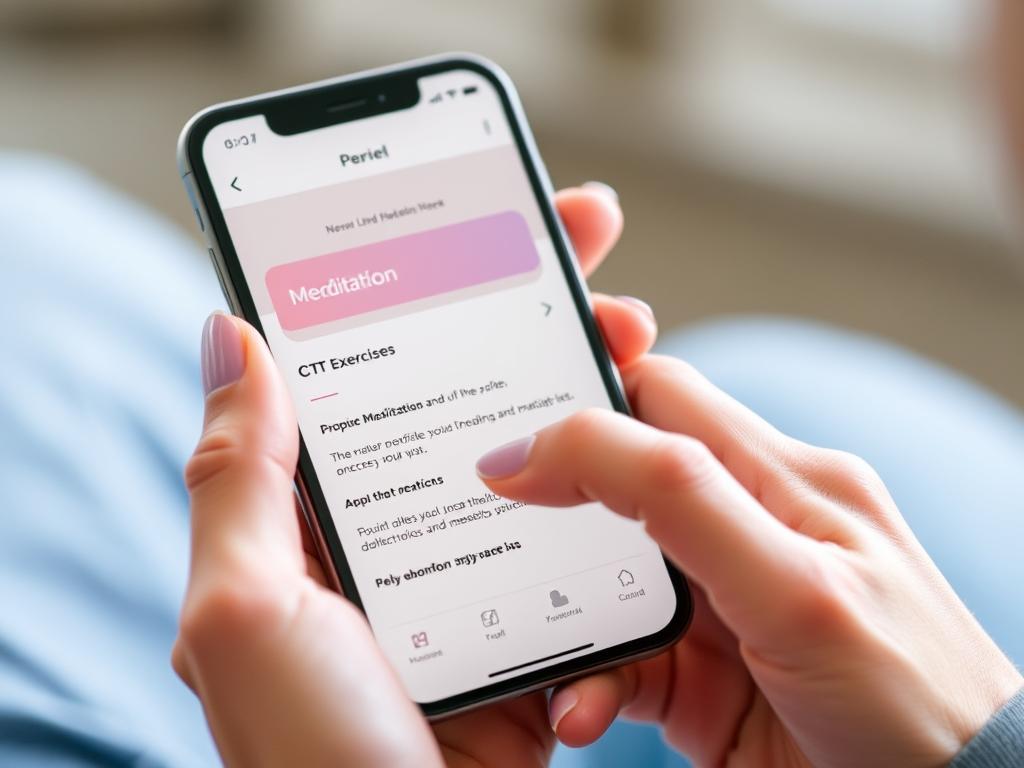Modern Treatment Options for Intrusive Thoughts
Breaking the Cycle: Modern Treatment Options for Intrusive Thoughts
Imagine standing on a train platform and suddenly experiencing the terrifying thought that you might jump—even though you have no desire to do so. Or perhaps you're holding a kitchen knife and are struck by the disturbing image of harming someone you love, despite having no violent intentions. These unwanted, distressing thoughts that seem to come from nowhere are called intrusive thoughts.
According to the Anxiety and Depression Association of America, intrusive thoughts affect approximately six million Americans. They can be fleeting moments of discomfort for some, while for others, they become persistent, distressing experiences that significantly impact daily life.
The good news? Science-backed treatments can help you regain control. Modern approaches to managing intrusive thoughts have evolved significantly, offering hope and practical solutions for those struggling with these challenging mental experiences.
Mindfulness practices are among several effective approaches for managing intrusive thoughts
Understanding Intrusive Thoughts
Before exploring treatment options, it's essential to understand what makes these thoughts so challenging and when they might require professional intervention.
What Makes Thoughts 'Intrusive'?
Intrusive thoughts are unwanted thoughts, images, or urges that feel strange, uncomfortable, and difficult to control. They often contradict your values and character, which is precisely why they cause such distress. According to research published in the Journal of Obsessive-Compulsive and Related Disorders, nearly 94% of people experience intrusive thoughts occasionally.
What separates normal intrusive thoughts from problematic ones isn't their content but rather how we respond to them. When we become fixated on these thoughts, trying desperately to suppress or neutralize them, we paradoxically strengthen their grip on our attention.
Neuroimaging studies show distinct patterns of brain activity during intrusive thought episodes
When Do Intrusive Thoughts Become a Problem?
Intrusive thoughts cross into problematic territory when they:
- Consume more than an hour of your day
- Cause significant distress or anxiety
- Interfere with work, relationships, or daily activities
- Lead to compulsive behaviors to neutralize the thoughts
- Persist despite attempts to ignore or suppress them
Intrusive thoughts are often associated with several mental health conditions, including:
Obsessive-Compulsive Disorder (OCD)
Characterized by unwanted thoughts (obsessions) that trigger anxiety, followed by repetitive behaviors (compulsions) performed to reduce distress.
Post-Traumatic Stress Disorder (PTSD)
Involves intrusive memories, flashbacks, or nightmares related to traumatic experiences that feel vivid and distressing.
Anxiety Disorders
Can feature persistent worrying thoughts about potential threats or dangers that feel difficult to control or dismiss.
Are Your Intrusive Thoughts Affecting Your Life?
If intrusive thoughts are causing significant distress or interfering with your daily activities, it may be time to seek professional help.
Find Mental Health ResourcesProven Treatment Options for Intrusive Thoughts
Research has identified several highly effective approaches for managing intrusive thoughts. These evidence-based treatments can significantly reduce symptoms and improve quality of life.
Cognitive Behavioral Therapy (CBT): Rewiring Your Response
Cognitive Behavioral Therapy (CBT) is considered the gold standard psychological treatment for intrusive thoughts. A 2023 meta-analysis published in JAMA Psychiatry found that CBT produced significant improvements in 75% of people with OCD-related intrusive thoughts.
CBT works by helping you identify and change the thought patterns and behaviors that maintain intrusive thoughts. Rather than trying to eliminate the thoughts themselves (which often backfires), CBT teaches you to respond differently when they occur.
CBT sessions focus on identifying thought patterns and developing healthier responses
A specialized form of CBT called Exposure and Response Prevention (ERP) is particularly effective for intrusive thoughts. ERP involves:
- Gradually exposing yourself to situations that trigger intrusive thoughts
- Resisting the urge to perform compulsive behaviors or mental rituals
- Learning that anxiety will naturally decrease over time without rituals
- Building tolerance to uncertainty and discomfort
"Exposure and Response Prevention (ERP) is the proven, most effective, first-line therapy for OCD in adults, children, and adolescents. ERP that is carried out properly helps individuals extinguish fears and eliminate compulsive behaviors in a structured, supportive environment."
Mindfulness-Based Techniques: Observing Without Judgment
Mindfulness approaches teach you to observe intrusive thoughts without judgment, rather than fighting or engaging with them. A 2024 study in the Mindfulness Journal found that regular mindfulness practice significantly reduced both the frequency and distress associated with intrusive thoughts.
Key mindfulness techniques include:
Mindfulness Meditation
Regular practice of focusing attention on the present moment, acknowledging thoughts without judgment, and gently returning focus to your breath or sensations.
Acceptance Strategies
Learning to accept that intrusive thoughts are just mental events, not reflections of your character or intentions, and allowing them to come and go without resistance.
Regular mindfulness practice can help reduce the impact of intrusive thoughts
Mindfulness Exercise for Intrusive Thoughts: When an intrusive thought appears, try labeling it simply as "thinking" and imagine it as a leaf floating down a stream, passing by without needing your attention or engagement.
Medication: When & How It Helps
For many people, medication can be an important component of treatment, especially when intrusive thoughts are severe or significantly impacting daily functioning.
According to the Mayo Clinic, several types of medications have proven effective for treating intrusive thoughts, particularly when they're related to OCD or anxiety disorders:
| Medication Type | Examples | How They Help | Considerations |
| Selective Serotonin Reuptake Inhibitors (SSRIs) | Fluoxetine, Sertraline, Fluvoxamine | Regulate serotonin levels to reduce intrusive thoughts and associated anxiety | First-line medication treatment; may take 8-12 weeks for full effect |
| Clomipramine | Anafranil | Powerful SRI with strong evidence for OCD-related intrusive thoughts | More side effects than SSRIs but highly effective |
| Antipsychotics (as augmentation) | Risperidone, Aripiprazole | Added to SSRIs when response is insufficient | Used at lower doses than for psychotic disorders |
It's important to note that medication for intrusive thoughts often requires higher doses and longer treatment duration than when these same medications are used for depression. Working closely with a psychiatrist who specializes in OCD and anxiety disorders is crucial for finding the right medication and dosage.
Looking for a Mental Health Professional?
Finding the right therapist who specializes in treating intrusive thoughts can make all the difference in your recovery journey.
Find a Specialist Near YouEmerging Approaches for Treating Intrusive Thoughts
While CBT, mindfulness, and medication remain the foundation of treatment, several newer approaches show promise for managing intrusive thoughts.
Acceptance and Commitment Therapy (ACT): Making Peace with Thoughts
Acceptance and Commitment Therapy (ACT) helps people change their relationship with intrusive thoughts rather than trying to eliminate them. A 2023 clinical trial published in the Journal of Anxiety Disorders found that ACT was as effective as traditional CBT for treating OCD-related intrusive thoughts, with some participants preferring its approach.
ACT focuses on living according to your values despite the presence of intrusive thoughts
ACT uses six core processes to help manage intrusive thoughts:
Acceptance
Embracing thoughts and feelings rather than fighting them
Cognitive Defusion
Learning to see thoughts as just thoughts, not absolute truths
Present Moment Awareness
Focusing on the here and now rather than dwelling on thoughts
Self-as-Context
Recognizing you are not defined by your thoughts
Values Clarification
Identifying what truly matters to you
Committed Action
Taking steps aligned with your values despite intrusive thoughts
Digital Tools: Apps and VR Therapy
Technology is creating new opportunities for treating intrusive thoughts, making evidence-based approaches more accessible and engaging.
Digital mental health tools can provide support between therapy sessions
Some promising digital interventions include:
Specialized Apps
Applications like NOCD and OCD.app provide guided ERP exercises, mindfulness practices, and tracking tools specifically designed for intrusive thoughts. These apps can supplement formal therapy or provide support for those unable to access in-person treatment.
Virtual Reality Exposure
VR technology allows for immersive exposure therapy in a controlled environment. Early research shows promising results for treating anxiety disorders and OCD, with VR exposure helping to create realistic scenarios that trigger intrusive thoughts in a safe setting.
Digital Privacy Note: When using mental health apps, review their privacy policies carefully. Look for HIPAA compliance and clear information about how your data is used and protected.
Try Evidence-Based Digital Support
Digital tools can provide structured support between therapy sessions or while waiting to begin treatment.
Explore NOCD AppCreating Your Personalized Treatment Plan
Effective management of intrusive thoughts often requires a personalized approach that combines multiple strategies. Here's how to build a comprehensive treatment plan:
Working with a mental health professional to develop a personalized treatment plan
Combining Approaches for Maximum Effectiveness
Research consistently shows that combining treatments often yields better results than any single approach. The International OCD Foundation notes that combining ERP therapy with medication is generally considered the gold standard for treating OCD-related intrusive thoughts.
First-Line Treatments
- Exposure and Response Prevention (ERP)
- Cognitive Behavioral Therapy (CBT)
- SSRI medications
- Mindfulness-based interventions
Treatments to Avoid
- Thought suppression techniques
- Unproven alternative therapies
- Self-medication with alcohol or drugs
- Treatments that promise quick fixes
When to Seek Professional Help
While self-help strategies can be valuable, professional help is essential when:
- Intrusive thoughts cause significant distress
- Thoughts interfere with daily functioning
- You're developing compulsive behaviors
- Self-help strategies aren't providing relief
- You're experiencing thoughts of harming yourself or others
Important: If you're experiencing thoughts of harming yourself, contact the National Suicide Prevention Lifeline at 988 or text HOME to 741741 to reach the Crisis Text Line. These services provide free, confidential support 24/7.
Finding the Right Mental Health Professional
Not all therapists specialize in treating intrusive thoughts. Look for professionals with expertise in:
- Cognitive Behavioral Therapy (CBT)
- Exposure and Response Prevention (ERP)
- OCD and anxiety disorders
- Acceptance and Commitment Therapy (ACT)
Self-Help Strategies for Managing Intrusive Thoughts
While professional treatment is often necessary, several self-help strategies can complement formal therapy and provide relief between sessions.
Journaling can help track thought patterns and identify triggers
Daily Practices to Reduce Thought Impact
Mindfulness Practice
Set aside 10-15 minutes daily for mindfulness meditation. Apps like Headspace and Calm offer guided sessions specifically for anxiety and intrusive thoughts.
Thought Labeling
When intrusive thoughts arise, simply label them as "just a thought" without engaging further. This creates distance between you and the thought.
Scheduled Worry Time
Designate 15-20 minutes daily to focus on worries. When intrusive thoughts appear outside this time, note them for later and refocus on the present.
Lifestyle Factors That Influence Intrusive Thoughts
Research shows that certain lifestyle factors can significantly impact the frequency and intensity of intrusive thoughts:
Sleep Quality
Poor sleep can increase vulnerability to intrusive thoughts. Aim for 7-9 hours of quality sleep and maintain a consistent sleep schedule.
Stress Management
Chronic stress can exacerbate intrusive thoughts. Regular exercise, deep breathing, and progressive muscle relaxation can help manage stress levels.
Caffeine and Alcohol
Both can worsen anxiety and intrusive thoughts. Consider reducing intake, especially if you notice increased symptoms after consumption.
Social Connection
Isolation can intensify intrusive thoughts. Maintain regular social connections, even if it's just a brief phone call or video chat with supportive friends or family.
Regular physical activity can help reduce stress and anxiety that contribute to intrusive thoughts
Explore Guided Self-Help Resources
Evidence-based workbooks and online courses can provide structured guidance for managing intrusive thoughts.
Try MindShift CBT AppSupporting Loved Ones with Intrusive Thoughts
If someone you care about is struggling with intrusive thoughts, your support can make a significant difference in their recovery journey.
Supportive conversations can help reduce isolation and shame
Do's and Don'ts for Supporting Someone
Helpful Approaches
- Listen without judgment
- Validate their experience
- Encourage professional help
- Learn about their condition
- Celebrate small victories
Approaches to Avoid
- Dismissing their concerns
- Providing reassurance about specific fears
- Participating in their compulsions
- Suggesting they "just stop thinking about it"
- Making decisions for them
"Supporting someone with intrusive thoughts isn't about removing their distress, but about standing with them as they learn to face it. Your presence and understanding can be powerful medicine."
Resources for Families and Supporters
Several organizations offer resources specifically for those supporting loved ones with intrusive thoughts and related conditions:
- International OCD Foundation's Family Resources
- Anxiety and Depression Association of America's Guide for Supporters
- National Alliance on Mental Illness Family Support Resources
Join a Support Community
Connecting with others who understand can provide valuable perspective and reduce feelings of isolation.
Find Support GroupsMoving Forward: Hope and Recovery
Living with intrusive thoughts can be challenging, but with the right treatment approach and support, significant improvement is possible. Many people who once felt controlled by their thoughts now lead fulfilling lives where intrusive thoughts, while still occasionally present, no longer dictate their choices or happiness.
Recovery is possible with the right treatment and support
Remember that seeking help is a sign of strength, not weakness. The journey toward managing intrusive thoughts may have challenges, but each step forward is meaningful progress.
If this article resonates with your experience, consider sharing it with someone who might benefit from this information. Your willingness to talk openly about mental health challenges helps reduce stigma and can encourage others to seek the help they deserve.
"Your thoughts don't define you—your actions do. With time and proper treatment, you can learn to experience intrusive thoughts without letting them control your life."
Take the First Step Today
If you're struggling with intrusive thoughts, reaching out for professional help can be the beginning of your recovery journey.
Find Treatment ResourcesTags: MentalHealthAwareness OCD AnxietyRelief Mindfulness TherapyWorks






















Comments
Post a Comment